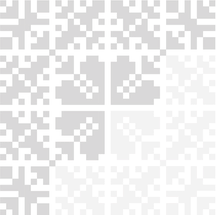C7 M3 L2 Vocabulary
7 | Modul 3: Vokabular
Svuda pođi, kući dođi
7 | 3 | Lekcija 2: Studentsko putovanje
V | 7.3 Zadatak 1. Pišem e-mail |
In this Lesson you have encountered how to write an informal email. Together with what you already know about texting in Croatia, look at the following expressions and indicate what style they represent - formal or informal way of writing. Then mark if they indicate an opening or a closing line in writing.
|
| Formalan stil | Neformalan stil | Početak | Kraj |
1 | Čujemo se |
|
|
|
|
2 | Poštovani |
|
|
|
|
3 | pozz |
|
|
|
|
4 | Srdačan pozdrav |
|
|
|
|
5 | Hej |
|
|
|
|
| Službeno dopisivanje - kako započeti e-mail
In formal writing, there are several factors to consider when writing an email.
Do we know who is a recipient or not? |
Do we know anything about the person who will receive our email? |
| Do we know who is a recipient or not?
If we don’t know who will receive our email, the best/safest option is to start our email with:
Poštovani, … | Poštovanje, … |
If we do know who will receive our email, and we still need to be formal in our writing, we need to pay attention to whether it is a male or a female that we are writing. When we know the gender, the best/safest option is to start our email in one of the following ways:
Male recipient | Female recipient |
Poštovani gospodine [Martiću], … | Poštovana gospođo [Martić], … |
Poštovani g. [Martiću], … | Poštovana gđo [Martić], … |
Poštovana gđice [Martić], … |
In Croatian, gđa is the equivalent for Mrs. and gđica is the equivalent for Miss.
To summarize - when addressing someone by their gender, there are abbreviations to use:
g. (Mr.) | gđa (Mrs.) | gđica (Miss) |
As you can see, with female forms there is no punctuation.
Note: When it comes to these two abbreviations (gđa and gđica), it is important to note that in official communication we should address women with gđa, regardless of their age, academic education, or type of work they do, unless they themselves express a desire to be addressed as gđica.
| Question of they/them pronouns in Croatian
There is a growing discussion about they/them pronouns in Croatian, but no one has the answer yet and it’s extremely fluid in Croatian. There is no linguistic and/or legal decision on this matter as of the time of this writing. In observing online discussions, abd like in the majority of other Slavic countries, people most commonly use one of the following:
1. Pronouns that match their assignment at birth. |
2. Pronouns that do not match their assignment at birth. |
3. A mix of feminine/masculine |
4. Masculine plural “oni” form is now gaining traction, but does not help when speaking about oneself. |
5. Feminine plural “one” form, but same issues as #4. |
6. Use of neuter gender pronouns ono (singular) and/or ona (plural) |
7. Innovations in writing which do not translate into speech well, like “on_a”. |
8. Many nonbinary people also prefer to be addresse “na Vi” since this helps avoid gender markings. |
| Službeno dopisivanje - kako završiti e-mail
In formal writing, the most common way to finish your email is by using one of the following lines:
Srdačan pozdrav, [your full name] | S poštovanjem [your full name] |
As you can see, the first one is followed by a comma, while the second one should always be written without a comma.
V | 7.3 Zadatak 1. Početak i kraj |
Look at the following email components and match them with the appropriate part and person when writing an email. Each component will have multiple answers.
|
| formal | informal | male recipient | female recipient | opening line | closing line |
1 | Pozdrav |
|
|
|
|
|
|
2 | gđice Martić |
|
|
|
|
|
|
3 | Zdravo! |
|
|
|
|
|
|
4 | S poštovanjem |
|
|
|
|
|
|
5 | Poštovana |
|
|
|
|
|
|
6 | gđo Martić |
|
|
|
|
|
|
7 | Pozz |
|
|
|
|
|
|
8 | Poštovani |
|
|
|
|
|
|
9 | Srdačan pozdrav, |
|
|
|
|
|
|
10 | Čujemo se, |
|
|
|
|
|
|
11 | g. Martiću |
|
|
|
|
|
|


